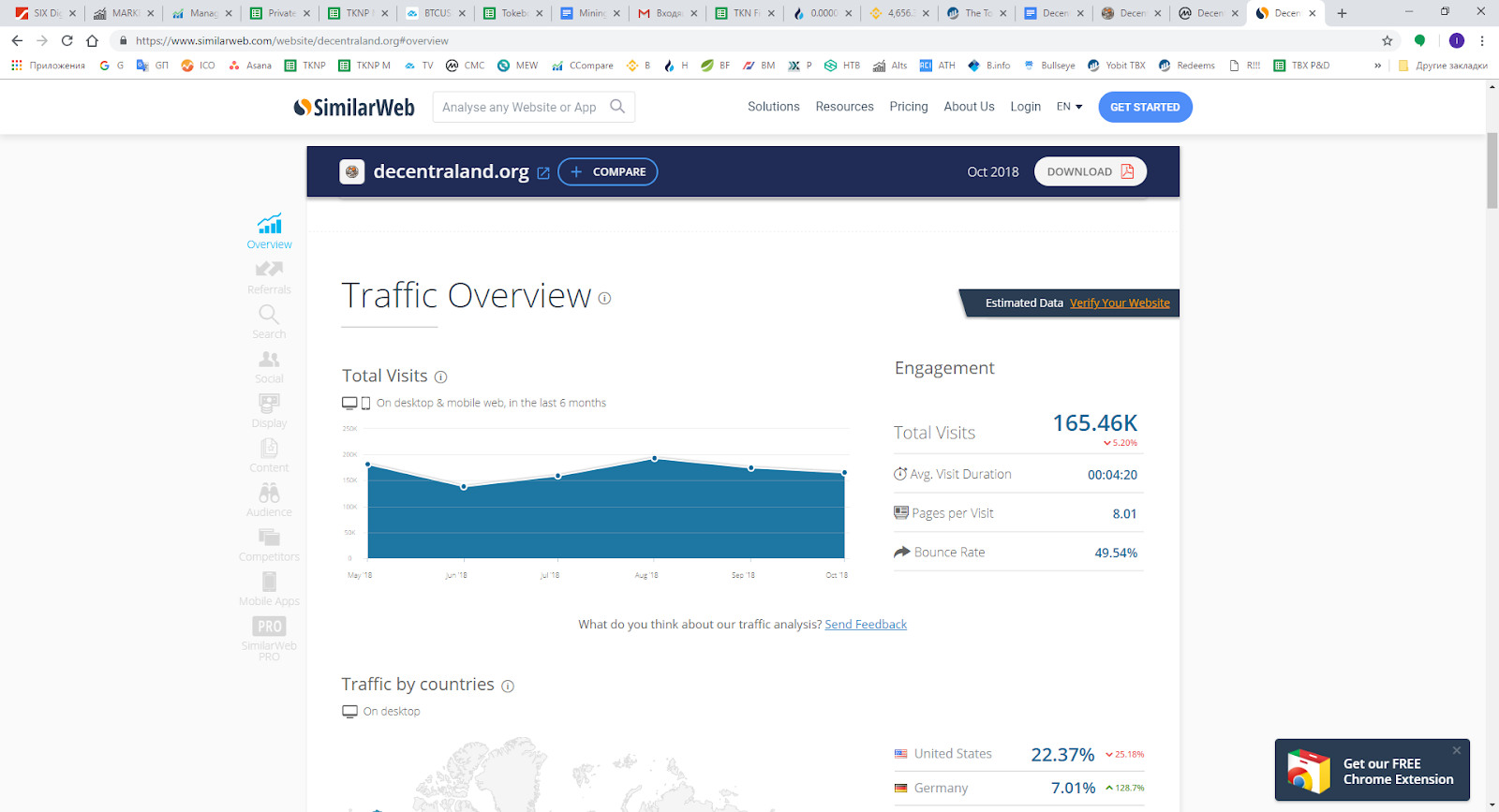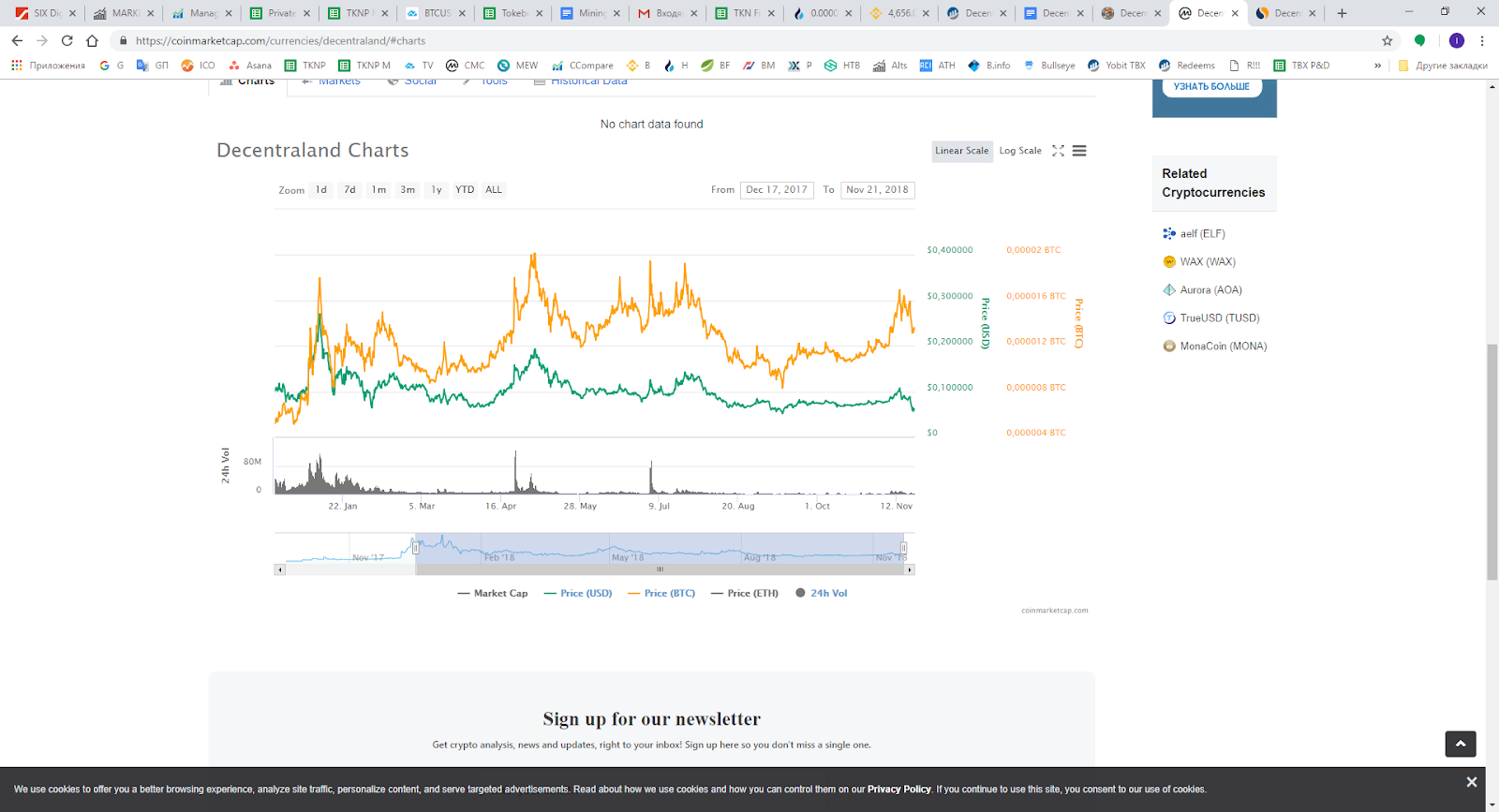Project Features And Development
Decentraland (MANA) is a platform of virtual reality, which is based on the Ethereum blockchain and is controlled by smart contracts. The project creates a special virtual world, a universe. It is divided into sections, which network users buy with special cryptocurrency MANA. 1 LAND = 1000 MANA. Decentraland’s ICO began on August 19, 2017, and a sum of $24M was raised in just 30 seconds.
The project was mentioned on BBC and CNBC channels. But what about its current development?
The project Decentraland started in June 2015, when its Stone Age began as a concept proof: a network with no exchangeable tokens (each token had unique characteristics).
In the early 2017 a Bronze Age took place: 3D world on a real blockchain was developed.
The current stage is a Silicon Age, with a full-fledged 3D world, with full VR support and customized laws of physics - live on the Ethereum blockchain.
An Iron Age – the first working version of virtual reality included:
· P2P network, using which participants interact with each other and the new world. It contains functions of text and voice messages, positioning, profile pics, different items and other options. A ready product is introduced.
· Micropayment system – the economy base of the new world. Users buy, sell, rent and modernize virtual real estate. MANA digital currency is in circulation.
· An interface of managing virtual “land”, using which creative users are able to create new impressions for visitors.
The Project's Real Use
There are more than 20 000 users of the platform so far. The activities are mainly purchase/sale of land parcels and building new locations and cities.
After the launch of the marketplace in March, on the first day the maximum number of transactions was made. After that, the number of transactions made remained on an average level of 5-10 transactions per day, which indicates stability of trading operations on the platform.
In April 2018, SDK and their own API were launched, enabling gaming companies and developers to create their own content for Decentraland. After that they got several solid partners, such as Barunson co. Ltd. Summarizing this part of the analysis – the real use of the product is obvious, however, they have a long way to go before going to the mass market.
Users’ social activity
Social activity of the users has been quite stable, even as there was a heavy growth of the entire market in December 2017. A very good result, especially compared with other blockchain projects.
Community
The majority of the followers are on Twitter - around 40K, with medium activity, but rather frequent posts. Facebook (NASDAQ:FB) page only has 6K followers. Telegram channels are not active. However, as the team says, community tends to use Discord as a messenger, and users’ activity mostly concentrates there.
Despite the constant development of the product and gradual development of the technology, the team doesn’t pay attention to mass marketing and development of social activity.
Analytical Report On Roadmap GitHub
The project’s roadmap is mapped out to 2020, but I hope developments and enhancements will be also carried out after 2020. RoadMap isn’t mapped out in detail, but consists units (so-called ages). Having spoken to the team, I compared the Roadmap and a Github repository. The deviations in the Roadmap are minimal.
Continuous updates of the marketplace and the client for additional developments constantly appear on Github. When checking technical part and project updates, I had no further questions.
Partner agreements
Within several last months Decentraland concluded strategic partnerships with such companies as - Kenetic, Inwecrypto, Barunson co. Ltd.
Andrew Kim, ex-CEO of Oculus and unit of Facebook’s VR in Korea, has recently joined Decentraland as a Business Development director. Korea is a strategic market and a favourable ground for blockchain games, also in TOP3 along with China and USA in the gaming industry.
Competitive Analysis
Decentraland has no competitors, this is a completely unique project that creates a brand new niche at the virtual reality market. The main, but not direct, competitor of the project is Second life. Google (NASDAQ:GOOGL), Facebook and other tech giants also try to conquer a part of virtual reality market, but on a smaller scale.
MANA Token Price-Change Dynamics
There are good indicators of the MANA token price change, starting from January 2018. Despite a downtrend over the market, MANA has been feeling quite good, and in April, after the SDK (API) launch, there was a good growth, partially related to the beginning of a third-party usage and real development of the project, and not only to speculation movements. From the beginning of ICO the token price is traded x3 to $.
Conclusion And Recommendations
Decentraland enters the market of virtual reality, and both have a very high potential. A serious growth of MANA price can be expected in the nearest future, while the market of virtual world may exceed $160 billions. There are stagnation risks of the real use of the project in long-term.


